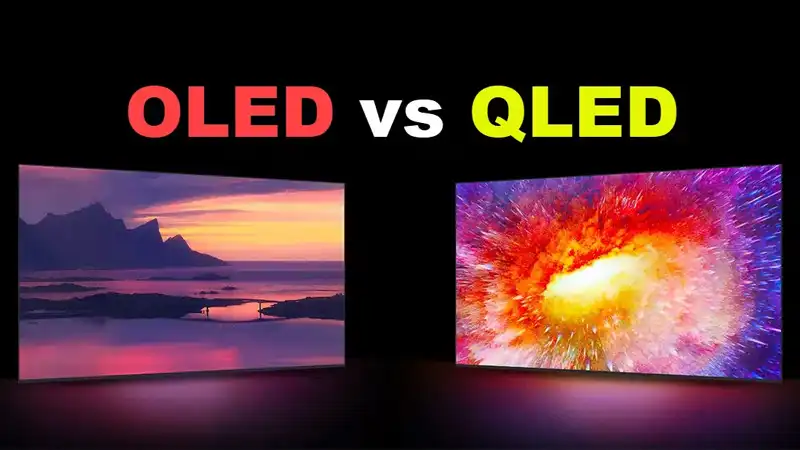The world of television technology has evolved rapidly, offering consumers an array of choices. Two of the most prominent and advanced display technologies are OLED and QLED. Each possesses unique strengths and caters to different viewing preferences. In this comprehensive guide, we’ll delve into the intricacies of both technologies to help you determine which one aligns best with your needs and desires.
Understanding OLED and QLED
- OLED (Organic Light-Emitting Diode): In OLED TVs, each pixel generates its own light, resulting in perfect blacks, infinite contrast ratios, and wide viewing angles. These characteristics contribute to an exceptionally immersive viewing experience.
- QLED (Quantum Dot Light-Emitting Diode): QLED TVs utilize a traditional LED backlight with quantum dot technology to enhance color volume, brightness, and contrast. While not achieving the same level of black levels as OLED, QLED TVs often offer superior peak brightness.
Picture Quality: The Core of the Experience
- Black Levels and Contrast: OLED reigns supreme in this category. Its self-illuminating pixels allow for true blacks, creating deep, inky images with exceptional contrast. QLED TVs, while improving with each generation, still struggle to match OLED’s black levels, though they have made significant strides.
- Color Accuracy and Volume: Both OLED and QLED deliver vibrant and accurate colors. However, QLED TVs often boast a wider color gamut, resulting in more vivid and saturated hues. OLED TVs, on the other hand, excel in color accuracy and subtlety.
- Brightness and HDR Performance: QLED TVs generally offer superior peak brightness, making them ideal for bright room environments and HDR content. OLED TVs have improved their brightness in recent years, but QLED still holds an edge in this area.
- Viewing Angles: OLED TVs provide excellent viewing angles, with minimal color shift or contrast reduction when viewed off-axis. QLED TVs have improved in this area but still can’t match OLED’s performance.
Other Factors to Consider
- Burn-in: While OLED technology has made significant strides in addressing burn-in, it remains a potential concern. QLED TVs are immune to this issue.
- Price: OLED TVs typically command a premium price compared to QLED models, especially at larger screen sizes.
- Gaming Performance: Both OLED and QLED TVs offer excellent gaming experiences. However, OLED TVs often have faster response times and lower input lag, making them a preferred choice for competitive gamers.
- Room Lighting: If you have a brightly lit room, a QLED TV might be a better choice due to its superior brightness. OLED TVs can suffer from reflections in bright environments.
Which One is Right for You?
The choice between OLED and QLED ultimately depends on your priorities and viewing environment:
- Choose OLED if:
- You prioritize picture quality, especially deep blacks and infinite contrast.
- You have a dimly lit viewing room.
- You value wide viewing angles.
- You can afford the premium price.
- Choose QLED if:
- You have a brightly lit room.
- You prioritize peak brightness and HDR performance.
- You are concerned about burn-in.
- You have a limited budget.
Examples of OLED and QLED TVs:
- OLED: LG OLED, Sony OLED Master Series, Panasonic OLED
- QLED: Samsung QLED, TCL QLED
It’s essential to see both OLED and QLED TVs in person to make an informed decision. Visit your local electronics store and compare side-by-side to experience the differences firsthand.
Ultimately, the best TV is the one that delivers the most enjoyment for you. By carefully considering your viewing preferences and budget, you can select the OLED or QLED TV that perfectly suits your needs.



